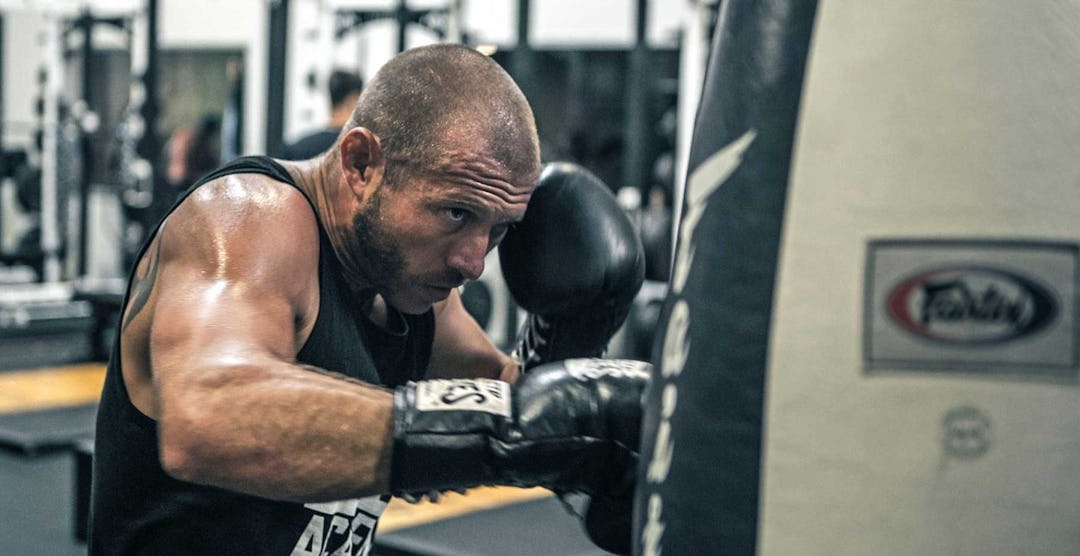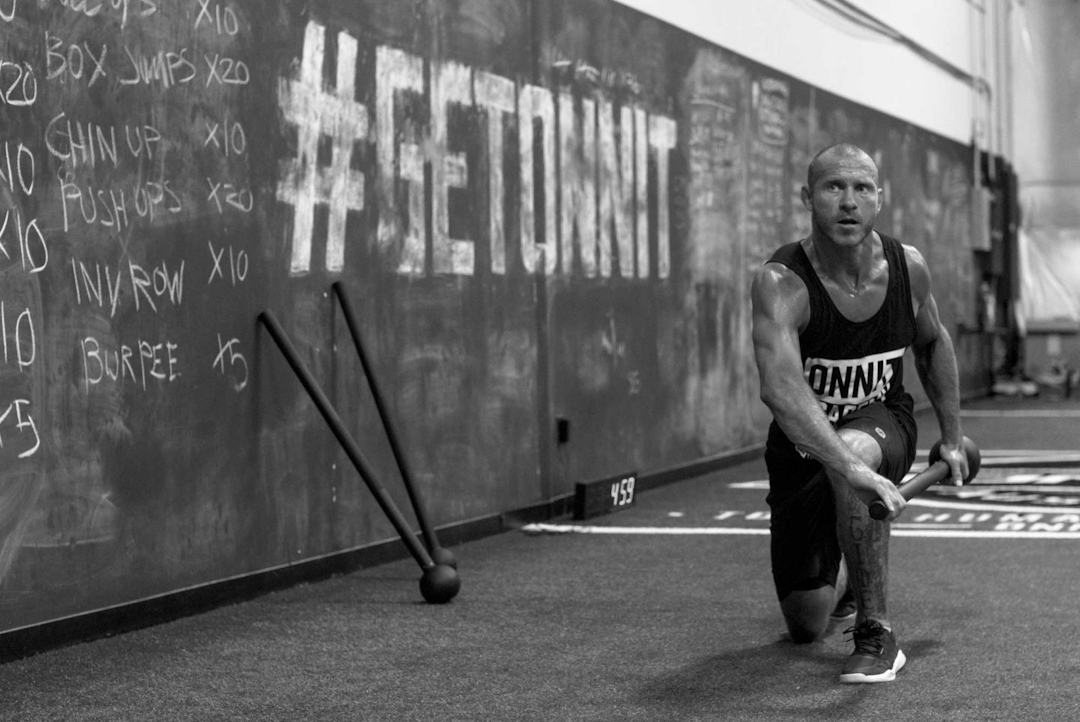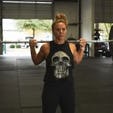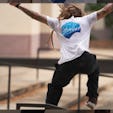Summary
● Cerrone has radically transformed his body in less than a year with the use of a suspension trainer, mace, and classic barbell and dumbbell exercises.
● He weight trains 4 to 5 days per week, avoiding exercises that are hard on his joints like cleans and back squats. Cerrone uses trap-bar deadlifts instead of the conventional type, and works single-leg exercises often.
● Cerrone swims in the morning five days a week, which provides a low-impact cardio workout
At 33, Donald “Cowboy” Cerrone is in the shape of his life, but as recently as last spring, he was a wreck. “When he first came into the gym, he couldn’t squat, couldn’t lunge,” says Lawrence Herrera, Cerrone’s strength and conditioning coach. “He’d do a squat and fall over and say, ‘Ah, my knee!’ He just didn’t do any strength and conditioning before.”
It seems incredible to think that while Cerrone could rumble for five rounds with the toughest fighters on earth, he couldn’t handle basic calisthenics. “He has arthritis in both wrists from all the striking he does,” says Herrera. “He couldn’t even do pushups. He had no wrist extension back in May. But he could climb a rock wall like it was nothing,” which goes to show that a great athlete can have many deficiencies and still perform at a high level.
The first step to rebuilding Cerrone was having him master his own body weight, which Herrera did with the use of a suspension trainer. Unloading some of his body weight by grasping the straps for support allowed Cerrone to work through full ranges of motion on basic exercises like squats and pushups and learn to control his body throughout them. As his strength improved, Cerrone graduated to weight training, but Herrera still has him avoid lifts that are hard on the joints or require mobility that’s beyond his level. “I do trap-bar deadlifts with him. I don’t do back squats. But we’ll load up dumbbell split squats. He can do 60s in each hand for four to six reps.”
For the upper body, Cerrone doesn’t bench press, but he’ll perform dumbbell presses from various positions, such as with his back on the floor and hips in the air—which simulates being on the bottom of a fight.
As pulling and grip strength are paramount in MMA, Cerrone works pullups and inverted rows from all angles. “I like the mace for grip strength,” Herrera says. Fighters need to be able to grip, especially late in a fight when they’re sweaty and wet. I like the weight moving around in a dynamic way and you have to control it, because that’s what a fight is—another person moving around and you have to control them.”
Cerrone’s conditioning isn’t as extreme as it was when he was fighting at 155 pounds. Without the need to burn lots of calories to keep him extra lean so he can make weight for fights, he’s free to spend much of that time on other aspects of his training. Still, Cerrone isn’t slacking. He swims first thing in the morning five days a week, and hits two additional conditioning sessions with Herrera, which typically call for sprinting or sled work. Several days per week, Cerrone and his team will meet friends at a local field and play an all-out game of ultimate Frisbee, which Herrera says allows Cerrone to have fun while doubling as a blistering agility session.
Read more about Cerrone’s nutrition and supplement regimen, and on Cerrone’s life at his BMF Ranch in New Mexico.
The Cowboy Cerrone Workout

Sample Swim Workout – A.M.
Cerrone performs a workout like this five days per week in the morning. Note that you may need to modify it if you’re not an experienced swimmer.
1. No-Breathers
Sets: 25 Reps: 1 EMOM
Set a timer and swim the length of the pool (or 25 yards) as fast as you can while holding your breath. Repeat every minute on the minute for 25 total reps.
2. Down and Back
Sets: 10 Reps: 1 lap down and back, EMOM
Swim the length of the pool and back (or 50 yards). Cerrone often does a butterfly stroke down and a freestyle swim back. Repeat every minute on the minute for 10 total reps.
3. Tread Water
Sets: 1 Reps: Work for 5 min.
Tread water for half the time using just your legs, and then the second half with your hands up and elbows out of the water.
Workout designed by Jesse Lucero, Cerrone’s swim coach.
Sample Lower-Body Workout – P.M.
Cerrone weight trains four to five days per week, typically alternating upper- and lower-body sessions. The following is an example of the type of lower-body workout he might do leading up to a fight, when he’s trying to develop peak power.
Directions
Perform the exercises marked “A” and “B” in alternating fashion. So you’ll do a set of A, rest, then B, and repeat until all sets for the pair are complete. The remaining exercises are done as straight sets—complete all sets for one move before going on to the next.
1. High Pull
Sets: 3–5 Reps: 3–6 Rest: 120 sec.
Grasp the bar with hands about double shoulder-width apart and hold it in front of your thighs. Bend your knees and hips so the bar hangs just above your knees. Explosively extend your hips as if jumping and pull the bar up to shoulder level with elbows wide apart, as in an upright row.
2A. Trap-Bar Deadlift
Sets: 5 Reps: 3–5 Rest: 10–20 sec.
Use a trap bar and stand with feet hip-width apart. Bend your hips back and grasp the handles. Take a deep breath into your belly and brace your abs. Keeping your lower back in its natural arch, drive through your heels to stand up straight and extend your hips and knees.
2B. Broad Jump
Sets: 5 Reps: 1 Rest: 180 sec.
Stand with feet between hip and shoulder-width apart and dip your hips and knees, swinging your arms behind you to gather momentum. Keep your chest facing forward. Jump as far forward as you can, reaching overhead with your arms, and land softly in a quarter-squat position.
3. Bulgarian Split Squat
Sets: 3–4 Reps: 4–6 Rest: 90 sec. (each side)
Hold a dumbbell in each hand and stand lunge length in front of a bench. Rest the top of one foot behind you on the bench with your knee bent 90 degrees. Lower your body until you feel a stretch in your hips and your rear knee nearly touches the floor. Maintain a vertical torso. Drive through your front heel to return to standing.
Workout designed by Lawrence Herrera, lhpeformance.com

)






